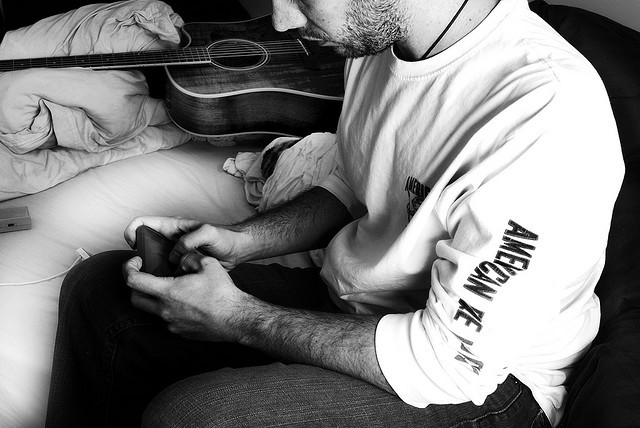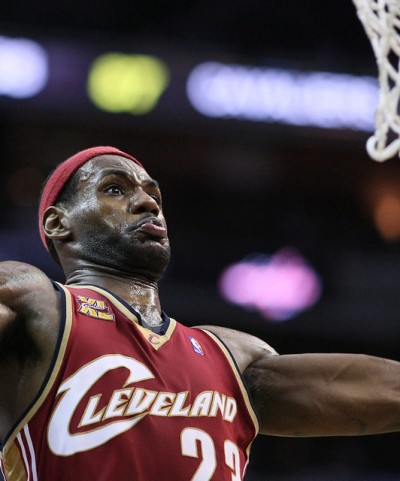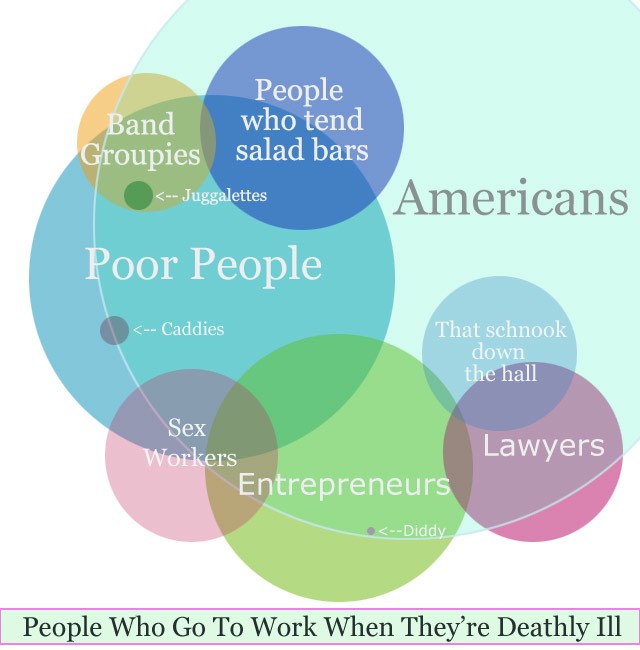Lampreys Should Adopt New Marketing Strategy
“To our knowledge these are the first in-situ observations of such behaviour during which one can convincingly state that lampreys attached to whales are rasping through the skin and feeding rather than just ‘hanging on for the ride’.”
— Owen Nichols, Director of the Marine Fisheries Initiative at the Provincetown Center for Coastal Studies, discusses a less-than-earth-shattering discovery. (Why wouldn’t we have assumed that lampreys like cetacean blood as much as that of fish?) But, the news is a good excuse to watch a video of the things. They are super-weird and cool-looking. They should change their nickname, though. “Vampire fish” is so 2009. They should start rolling their eyes back in their heads, and holding their fins out all rigid and straight and call themselves “zombie fish.” It’s all about zombies now.
Tony Wilson's Tombstone Is Pretty Badass
We’re late to this one, but it’s totally worth it: “Factory Records founder Anthony H Wilson died in August 2007. Just over three years later, a memorial headstone designed collaboratively by Wilson’s long-term associates Peter Saville and Ben Kelly with Paul Barnes and Matt Robertson, was unveiled in The Southern Cemetery in Chorlton-Cum-Hardy, Manchester.” [Via]
The Best Damn Baby Bear Bucket Video You Will See All Day
I don’t care what else happens today, because there is this. OH MY GOD baby grizzly. I am literally grinning as I type this. In fact, I’m gonna go watch it again. Later! [Via]
RELATED: Polar bear football!
Writing Writers Like
A dozen authors, including Julian Barnes, William Boyd, Rose Tremain and Jeanette Winterson, discuss their favorite short stories in the Guardian.
Personal Branding Disorders

Are you allergic to Twitter? Do you befriend people outside your target demographic? Then you may be suffering from an undiagnosed personal branding disorder.
As our country continues its nosedive from prominence, we can all rest assured that, even as our tiny fortunes disappear and our little ships sink, our ability to create the illusion of inherent personal value will save us. Remember, in the golden age of social networking, our personalities are irrelevant; our personal brands are what really matter.
Accordingly, psychologists will soon shift gears from diagnosing personality disorders to diagnosing personal branding disorders. After all, you might be obsessive-compulsively checking Twitter all day for mentions of your name, but that doesn’t mean you’re sick, it just means that you’re committed to maintaining a robust social networking presence in order to adjust to the demands of an increasingly volatile global marketplace. What was once considered pathological, personality-wise, must be viewed as wildly adaptive in today’s ever-shifting digital landscape.
Conversely, personal branding disorders have the power to rip the American Dream right out of your clutches. If you’re not ready to take your appeal as a human being and boil it down to a few key words, if you can’t reduce your complicated philosophical perspectives down to a sexy catchphrase? You’re in trouble. Now is the time to ask yourself: Do you want to be a part of the next wave of rich personal self-promotion, or do you want your child to grow up not knowing what really good sushi tastes like?
In order to protect yourself and your offspring, be sure to familiarize yourself with a few of the most prominent personal branding disorders currently threatening our socioeconomic infrastructure:
• Avoidant Branding Disorder: You’re hypersensitive to comments posted on your Facebook page, and highly self-conscious about your tweets, wasting hours editing them and finally deleting them because they’re not quite right. The fact that you only have 13 followers on Twitter has led to severe low self-esteem, but you occasionally pronounce the whole thing “a useless waste of time.” The thought of attending a social networking conference makes you break out in hives.
• Brand Identity Disorder: You often find yourself longing to be accepted by people outside of your target demographic. You’re haunted by the illusion that there’s a difference between your brand and your “real personality.” You experience anxiety when you’re confronted with distribution models or marketing strategies that go against your basic “values” or “principles,” most of which are unnervingly unrelated to the laws of supply and demand.
• Histrionic Branding Disorder: Your statements are often highly emotional and don’t support or endorse your brand in any way. You sometimes go off on tangents, both in real time and via social networking tools, that aren’t related to the product or services you currently offer. You waste excessive time each day focusing on feeling “appreciated” or “loved” instead of monitoring your profit margins. You frequently attest to the importance of “finding true love,” often at a significant cost to any ongoing efforts to increase your sphere of influence and expand your potential customer base.
• Schizoid Branding Disorder: You have been overheard proclaiming that Twitter is for blowhards with ADHD. You profess a love of “nature” and “reading books” instead. You refuse to chat with people online, and your cell phone service charges extra for texting. You call Blackberries “Crackberries” and claim that you’re not even a little bit curious about the iPad. When someone asks you a polite question, such as “What’s your current distribution capacity?” you merely roll your eyes and shrug, then wander off without answering.
Unfortunately, because these Personal Branding Disorders have only recently been identified as serious maladies by helping professionals across the country, further study is necessary in order to understand their causes and consequences. Above all, the population must be alerted to the threat. Ultimately, personal branding disorders are capable of eroding international trade, thereby curtailing our access to basic goods and services — like dog grooming, and chili cheese fries!
The next time you find yourself disparaging iPhone apps or raving about the restorative effects of growing organic milkweed in handmade windowboxes, it’s imperative that you seek professional help immediately. Remember, there’s no shame in admitting that you’re indifferent to your own multi-platform marketing initiatives, as long as you can see clearly that it’s not normal. The sooner you can admit that you’re sick, the sooner you can address your ineffectual sales tactics and build a more resilient, dynamic personal brand that will resonate with a wide range of potential customers, now through the end of the fiscal year.
Heather Havrilesky is staff critic at The Daily and author of Disaster Preparedness, a memoir published by Riverhead Books in January 2011. She was Salon.com’s TV critic for 7 years and cocreated Suck.com’s Filler before that. She has dispensed ill-tempered advice at the rabbit blog since 2001.
Photo by Bryan Rosengrant, from Flickr.
Photo Of Foodstuff With Wu-Tang Symbol On It Incorrectly Labelled

Of course I enjoyed this collection of “12 Wu-Tang Ws in Strange Places.” Who wouldn’t? Despite the fact that we’ve seen a few of them before (the deservedly famous pizza is there). But this one here, of meatloaf with ketchup baked into the shape, should not be captioned “Wuloaf.” It should be called “Streetloaf.” And Wu-Tang associate MC Streetlife should write a verse about it. Over a track that samples that Roxy Music.
Easter Parade
“It’s unfortunate that Christmas and Easter have more to do with boosting the economy than with the birth and death of Jesus. Although I am not a Christian, I still find myself repulsed by the rampant commercialism that goes on.”
— Artist Ian Moir discusses his next work, a piece for Easter in which he will “[parade] a dead rabbit through the streets before crucifying its lifeless body on a cross.”
The Idiot Defense

I have a friend who, several years ago, was accused of a fairly serious, non-violent (or even icky, for that matter) crime. It was a bad situation, or would have been so had he been convicted. Like, orange-jumpsuit bad. Smartly, he’d hired a hotshot criminal defense attorney who hatched a plan to get my friend off using what I like to call the “Idiot Defense.”
It consisted of the lawyer standing in front of the judge and, in effect, saying, “My client is an idiot. He behaved in a certain manner that may seem to be counter to coherent, rational thought because his brain doesn’t operate like the rest of us. He’s slow and thought he was doing the right thing.”
Needless to say, with such a heartfelt “confession” my friend (who is actually quite intelligent) was exonerated and, thankfully has learned his lesson, which is good because you only get to pull the Idiot Card one time in your life. And, if you are reading this, LeBron James, you just used yours.
As the Year of the Akron Snake drew to a close, James conducted another of his charming fireside chats where he spoke about how, as an athlete (and therefore eminently qualified to ruminate on matters of business and others’ livelihoods) the NBA would be far better if there were fewer teams.
As you can see, there’s no wiggle room in his words. No contextual argument to claim misquoting. James wasn’t lured down a path by cagey reporters, but actually wondered aloud about which players could move where in his new version of the NBA, and how joyous life would be if, for example, one of the teams that he pretended had a chance to sign him would actually disappear forever, like the Cavaliers’ playoff hopes.
Naturally, the news went over pretty poorly with the rest of the league’s players, owners and the NBA Player’s Association. (Not to mention the NBA Players Posse Association, which took the news like a shot to the throat.) Even the reedy, thin-skinned Nets coach Avery Johnson took issue and, said what a lot of people thought: mind your own damn business, LeBron. “Oh, snap!” is right.
James quickly backpedaled, but in doing so, uttered is the single greatest argument for a minimum age restriction in the NBA. He also made me think of my friend’s tongue-biting day in court.
“That’s crazy,” LeBron said, “because I had no idea what the word ‘contraction’ meant before I saw it on the Internet.”
Heh? I won’t go into the sociological ramifications of a grown person not knowing what the word contraction means. Words are confusing. I didn’t know what the word élan meant until I read it 4,000 times in Vanity Fair and looked it up.
But a professional athlete advocating an action that will knowingly put some of his dap friends out of work? Unheard of. Which is why James, like the fantastic Mr. Fox, did what he does best: continued digging furiously.
“I never even mentioned that,” he said. “That word never even came out of my mouth. I was just saying how the league was back in the ’80s and how it could be good again. I never said, ‘Let’s take some of the teams out.’”
I know what you’re thinking and I agree. That’s exactly what he said and what he meant. Because the word “contraction” was not available in his vocabulary quiver, it doesn’t mean that James didn’t know the power of his words.
Obviously, in granting him his free pass, the sports media nevertheless had some fun at his expense. Even to folks like me who have already seen athletes bend themselves into verbal pretzels for years, often within the same sentence, this maneuver was Béla Károlyi amazing. But it was not altogether unexpected.
The past six months of LeBron James life have been a jumble of contradictions: he’s a prodigiously talented athlete, but a relatively pedestrian human being. He’s best player in the NBA, but is happy playing second banana to its sixth best (I counted.)
It’s hard to imagine Michael Jordan taking such a stand against his fellow players — he was always a union man — but had he done so, it is impossible to think of him denying his actions. Or, you know, using the “Idiot Defense.”
But don’t quote me on that.
Tony Gervino is a New York City-based editor and writer obsessed with honing his bio to make him sound quirky. He can also be found here.
Photo by Keith Allison, from Flickr.
Death From Above, Louisiana Edition
Now dead birds are falling from the skies of Louisiana. I don’t want to go overboard on this, but coming so closely after the mass fish and bird deaths in neighboring Arkansas, I think it’s pretty clear: WE ARE TOTALLY IN END TIMES. Everybody panic.

